Birds are amazing creatures that can fly, sing, and communicate with each other. They have different behaviors and personalities that make them fascinating to watch and interact with. Some birds are friendly and sociable, while others are timid. Some birds are playful and curious, while others are calm and quiet.
One of the behaviors that may puzzle or concern bird owners or observers is when a bird is laying on its back. This is not a common posture for birds, as they usually stand on their feet or perch on branches or wires. A bird laying on its back may look cute, funny, or weird, but what does it mean? Is it normal or abnormal? Is it a sign of happiness or distress?
In this article, we will explore the possible reasons why a bird is laying on its back and what it is trying to communicate. We will also provide some tips on how to care for a bird that is laying on its back and when to seek professional help.
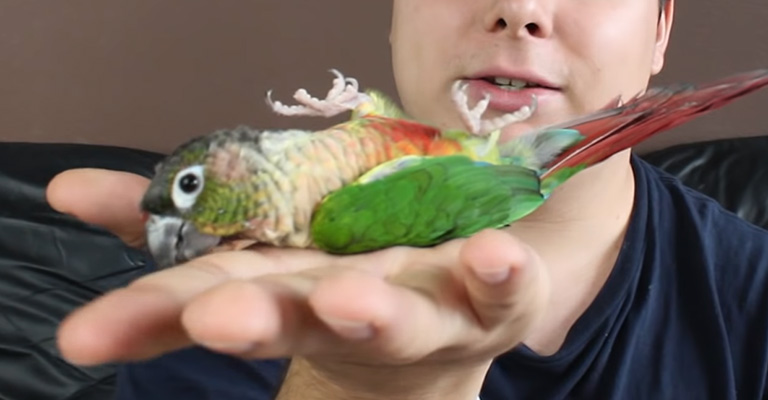
What Does It Mean When a Bird Is Laying on Its Back?
Here are a couple of reasons why a bird may lie on its back-
Exhaustion
Due to exhaustion or extreme fatigue, birds may lie on their backs. Flying can be physically demanding, and when birds become overly tired, they may rest on their backs to conserve energy and recover.
Injury or Illness
A bird lying on its back could indicate an injury or illness. Serious injuries, such as broken wings or legs, can leave a bird unable to maintain an upright position. Additionally, illnesses affecting balance, coordination, or neurological functions may cause a bird to fall onto its back.
Predation or Threat
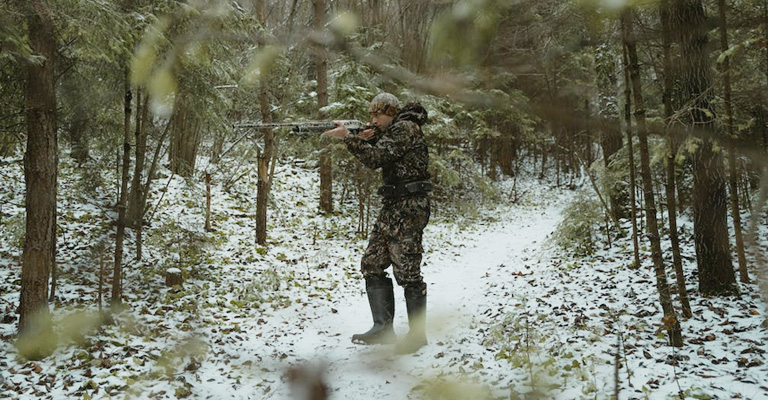
When birds feel threatened or attacked by predators, they may instinctively fall onto their backs as a defensive strategy. By exposing their talons or sharp beaks, they attempt to ward off potential attackers.
Stunned or Dazed:
Sometimes, birds can become stunned or disoriented due to collisions with windows, buildings, or other obstacles. In these cases, they may temporarily lose their equilibrium and lie on their backs until they recover and regain their ability to fly or stand.
Heatstroke or Dehydration
Birds can suffer from heatstroke or dehydration, especially in hot weather conditions. When birds become overheated or dehydrated, they may collapse and lie on their backs to cool down or seek relief from the heat.
Seizure or Neurological Issues
Seizures or other neurological disorders can cause birds to exhibit unusual behaviors, including lying on their backs. These conditions affect their motor control and coordination, leading to uncontrolled movements and an inability to maintain an upright position.
Egg-Laying Difficulties
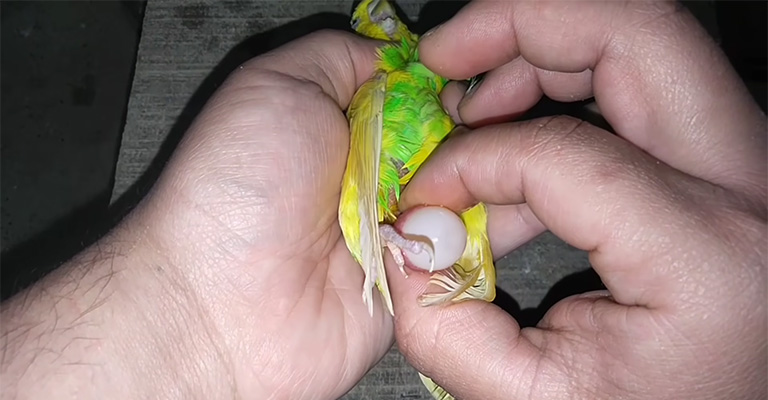
Some female birds, particularly those laying large eggs, may experience difficulties during the egg-laying process. In some instances, they may lie on their backs in distress if they cannot expel the egg.
Environmental Factors
Adverse environmental conditions, such as strong winds or sudden changes in atmospheric pressure, can affect a bird’s ability to fly and maintain balance. Birds may end up on their backs if they are overwhelmed by these external factors.
Natural Behavior or Sunbathing
While less common, certain bird species, such as vultures or shorebirds, may lie on their backs as part of their natural behavior. This behavior can serve various purposes, including sunbathing, cooling off, or engaging in social displays.
How to Help a Bird That Is Lying on Its Back?
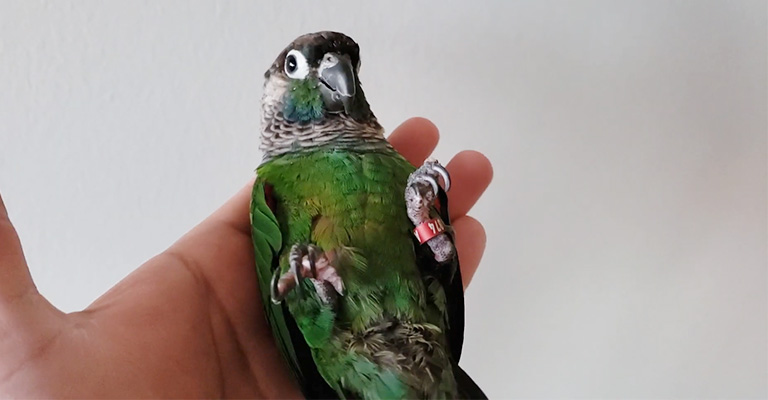
Here are some tips on how to help a bird that is lying on its back:
Gently Approach the Bird
Do not startle the bird by approaching it too quickly or making loud noises.
Check for Injuries
Look for any obvious injuries, such as broken bones, bleeding, or open wounds. If you see any injuries, do not touch the bird. Instead, contact a wildlife rehabilitator.
Turn the Bird Right-Side Up
If the bird is lying on its back, gently turn it right-side up. If the bird is still unconscious, you can place it in a shoebox or other small, enclosed container.
Provide Warmth and Quiet
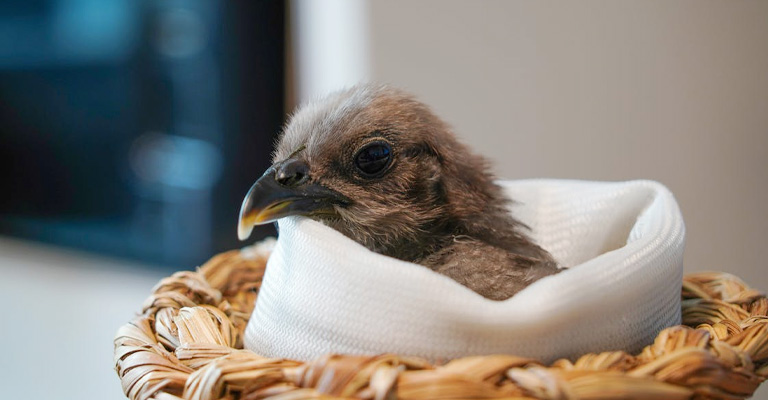
Place the bird in a warm, quiet place. You can use a heating pad set to low or a warm, damp towel to help keep the bird warm.
Do Not Give the Bird Food or Water
If the bird is unconscious, it will not be able to swallow food or water. Giving the bird food or water could make it choke.
Monitor the Bird
Check on the bird every few minutes to see if it is regaining consciousness. If the bird does not regain consciousness after 30 minutes, contact a wildlife rehabilitator.
It is important to remember that even if you do everything right, there is no guarantee that the bird will survive. However, by following these tips, you can increase the chances of the bird recovering.
Here are some additional tips on how to help injured birds:
- Do not touch the bird if it is in a dangerous location. If the bird is in the middle of a road or near a predator, it is best to leave it alone.
- If you can safely move the bird, place it in a safe location away from predators. You can place the bird in a shoebox or other small, enclosed container.
- Contact a wildlife rehabilitator as soon as possible. Wildlife rehabilitators have the training and experience to care for injured birds.
FAQ
Training your bird to lie on its back requires patience, consistency, and positive reinforcement. You can start by holding your bird in your hand and gently rolling it onto its back. You can also use a towel or a blanket to wrap your bird and flip it over. You should praise your bird verbally or with a treat when it lays on its back.
Preventing your bird from getting injured or sick requires providing it with a safe and clean environment, a balanced and varied diet, and regular care and check-ups.
You should provide your bird with a spacious and sturdy cage that has enough room for flying, perching, playing, and resting. You should also equip the cage with toys, swings, ladders, mirrors, bells, and other accessories to keep your bird entertained and stimulated.
Telling if your bird is happy or unhappy requires observing its body language and vocalizations. Some signs that your bird is happy are flapping its wings, bobbing its head, singing or chattering cheerfully, clicking its beak softly, twitching its tail feathers, etc.
Bonding with your bird requires time, trust, and respect. You can bond with your bird by spending quality time with it every day, talking to it softly and gently, offering it treats and toys, and letting it out of its cage for supervised playtime. You can also teach your bird some tricks or commands to stimulate its intelligence and strengthen your bond.
The lifespan of a bird depends on several factors, such as its species, genetics, diet, health, care, and environment. In general, smaller birds tend to live shorter than larger birds. For example, budgies can live up to 10 years in captivity, while macaws can live up to 60 years in captivity.
However, some birds may live longer or shorter depending on their circumstances. To extend your bird’s lifespan, you should provide it with a good quality of life that meets its physical and emotional needs.
Conclusion
Birds are expressive animals that use their body language and vocalizations to communicate their emotions and needs. By observing their behavior and posture, you can understand what they are trying to tell you and how to respond accordingly.
Birds lay on their backs for various reasons, such as trust and comfort, injury or illness, or simply preference. Depending on the context and the mood of the bird, this behavior can have different meanings and implications.
By knowing why birds lay on their backs, you can better care for your feathered friend and enjoy a happy and healthy relationship with it.